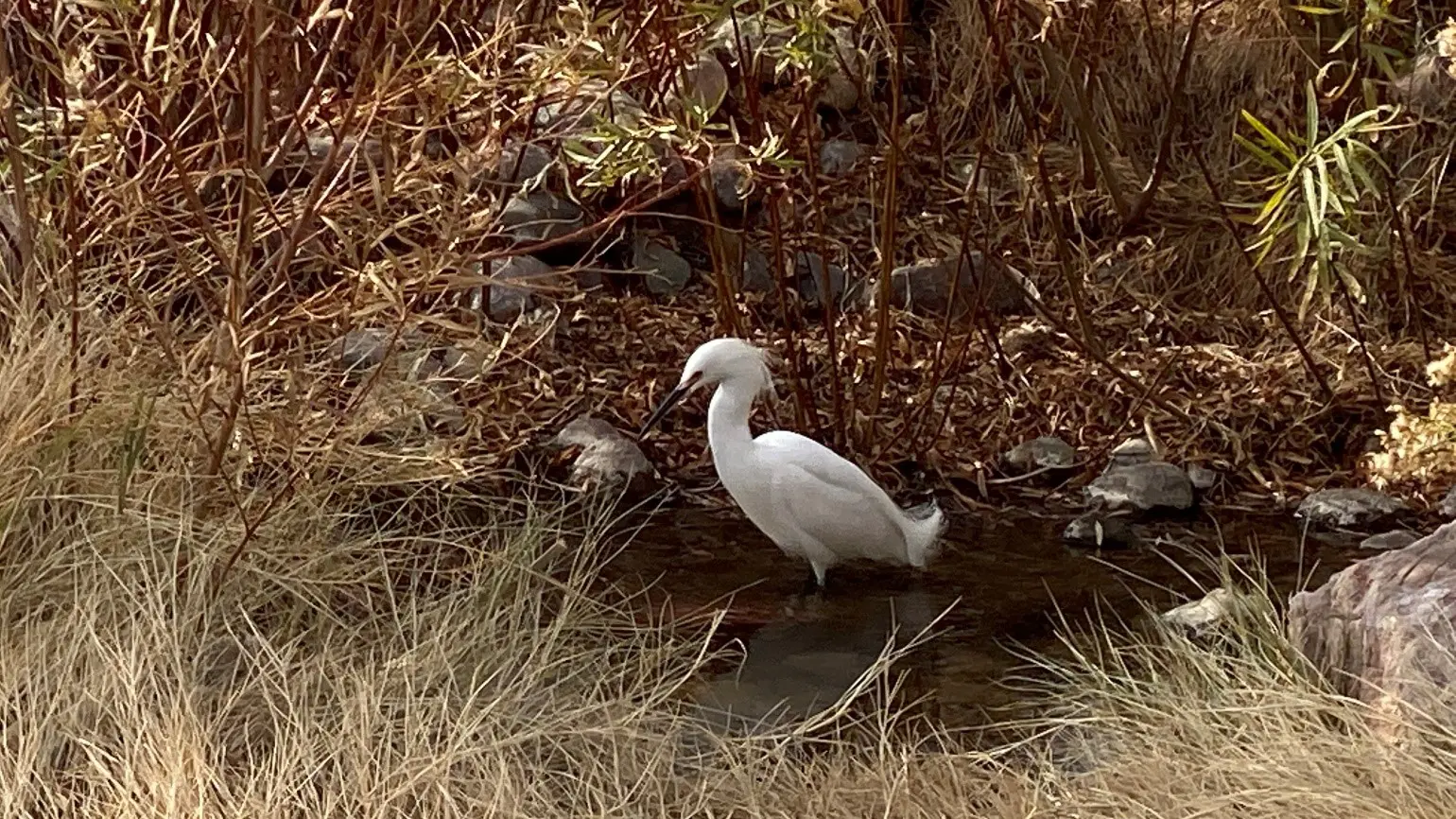The Snowy Egret

WHICH WETLANDS PARK HUNTER HAS BEAUTIFUL WHITE PLUMAGE AND YELLOW SLIPPERS?
Snowy egrets (Egretta thula) are not the most common resident birds at Clark County Wetlands Park, but they are certainly among the most striking! These small egrets stand about two feet tall, and sport snowy white feathers, long fluffy “aigrette” plumes in breeding season, black bills and legs, and bright yellow feet!
Snowy egrets are found in marsh areas across most of North America in the summer. Their winter range extends from the extreme southern edge of the United States southward into Mexico. We are fortunate to have them at the Park year-round.
Watching the egret’s hunting skills can be endlessly fascinating. They do not seem too easily upset by people and will allow observers to watch them hunt if we keep our distance. Binoculars are a great tool for getting all the details!
Snowy egrets are very active feeders, hunting for small prey in shallow water, usually along the edge of a marsh, pond, stream, or even ocean. They use a variety of hunting strategies to capture the shrimp, small fish, amphibians, crabs, snakes, and insects on their menu. Patience is needed to see the most hunting techniques when watching, but it is almost always rewarded.
“Snowys,” like other herons and egrets, often stand and wait in shallow water for prey to appear. To strike and capture an underwater fish, the bird must correct for the refraction of light at the water’s surface. Because of this bending of light, the fish is not actually where it appears to be. In order not to miss its strike, the egret positions itself at a particular angle to compensate for the bend of refraction. If the fish is still, and the preferred angle is not blocked, the bird will not miss. They use their slender black bills to stir or vibrate the surface of the water, imitating an insect struggling in distress. When a fish responds to get lunch, it becomes lunch. The egret’s long yellow toes are used to stir, probe or rake the bottom of a pond or stream to disturb prey, spooking it out of hiding and into the bird’s bill. They even wiggle their toes gently to lure prey within range of their striking bill.
Snowy egrets walk quickly, run, or hop to get within range of their prey. They even fly low over the water, grabbing prey “on the fly.” An interesting technique is called “wing flicking.” The egret quickly extends and withdraws both wings while standing or slowly walking along in the water. This short, rapid “flicking” motion may cast shadows on the water and flush prey into the open for the bird to grab.
Watch the edges of ponds and streams for Snowy egrets on the hunt. They are beautiful, and so interesting to watch!
Please enjoy these YouTube videos:
– By Chris Leavitt, President; photo by John Drake
